#energy infrastructure
Link
1 note
·
View note
Text
#Energy Infrastructure for EV Charging Stations Market#EV Charging Stations#Energy Infrastructure#Energy Infrastructure for EV Charging Stations#Charging Pile#Charging Station
0 notes
Text
Nachtigal Dam Injects First 60 Megawatts into Cameroon's Power Grid
Discover how Cameroon's Nachtigal Dam injects its first 60 megawatts into the national power grid, marking a significant milestone in the country's energy journey.
#Cameroon #NachtigalDam #HydroelectricPower #EnergyInfrastructure #RegionalDevelopment
Cameroon’s quest for enhanced energy production took a significant stride as the Nachtigal Dam, a monumental hydroelectric project, injected its initial 60 megawatts (MW) into the Southern Interconnected Grid (RIS) on May 10, 2024. This momentous occasion was marked by the presence of the Minister of Water and Energy, Gaston Eloundou Essomba, along with other dignitaries.
The Nachtigal project,…
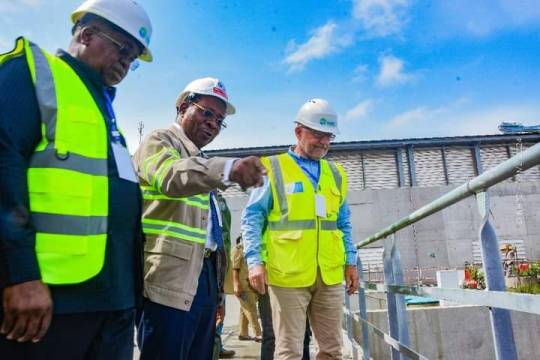
View On WordPress
0 notes
Text
Pass legislation to significantly expand transmission for clean energy NOW!
AN OPEN LETTER to THE PRESIDENT & U.S. CONGRESS
820 so far! Help us get to 1,000 signers!
Right now, there are at least 2,000 gigawatts of renewable energy waiting for permission to connect to power lines in the U.S., which is more than the total capacity of the country’s existing power plants. Wait times to connect new power plants to the grid can reach five years or more. Without rapidly improving transmission, the United States will not be able to achieve Biden's goal of 100% clean energy by 2035 or provide cheaper, more reliable electricity to American households. If the U.S. can’t build new transmission at a faster pace, roughly 80 percent of the emissions reductions expected from the Inflation Reduction Act–the largest climate legislation in U.S. history–might not happen.
That’s why I’m writing to urge Congress to pass legislation to significantly expand transmission for clean energy.
Multiple efforts are currently in play. Most recently in the House, Representatives Sean Casten and Mike Levin introduced the Clean Energy and Transmission Acceleration Act, (HR 6747) which would encourage the development of new transmission lines to carry renewable power where it’s needed while protecting the rights of communities to provide input on where lines are built and to benefit from their construction. I strongly support this bill.
But any legislation is better than none, and NONE of the bills proposed so far have been passed. This is not good.
Increasing access to clean energy will help tackle the climate crisis by ensuring the reliability of the grid and reducing consumers' bills. Renewable energies like wind and solar are quickly becoming the least expensive source of energy and we need to make sure as many people as possible get access to these clean, abundant energy sources.
Please pass a strong, fair transmission bill—like HR 6747—that prioritizes clean energy, climate change, and environmental justice. This is urgent; all of our children are counting on us to secure their futures. Thanks.
▶ Created on April 23 by Jess Craven · 819 signers in the past 7 days
📱 Text SIGN PMNVSR to 50409
🤯 Liked it? Text FOLLOW JESSCRAVEN101 to 50409
#JESSCRAVEN101#PMNVSR#resistbot#Clean Energy#Renewable Energy#Climate Action#Transmission Expansion#Green Energy#Clean Energy Now#Climate Change#Energy Infrastructure#Renewables#Climate Crisis#Energy Policy#Infrastructure Bill#Green Grid#Renewable Power#Energy Transition#Climate Legislation#Sustainable Energy#Clean Tech#Electric Grid#Energy Security#Energy Equity#Renewable Future#Grid Modernization#Climate Justice#Energy Innovation#Renewable Resources#Energy Efficiency
0 notes
Text
Earnings Summary: Schlumberger reports Q4 2023 financial results
Energy infrastructure company Schlumberger Limited (NYSE: SLB) on Friday announced financial results for the fourth quarter of 2023, reporting higher revenues and earnings.
Fourth-quarter revenue increased 14% year-over-yeara to $8.99 billion, and rose 8% sequentiallyAdjusted earnings, excluding charges and credits, came in at $0.86 per share, up 21% YoYOn an unadjusted basis, earnings per share…

View On WordPress
0 notes
Text
Germany calls for more engagement with Africa
German Chancellor Olaf Scholz on Monday called for closer co-operation between the EU and African countries on renewable energy and green hydrogen production.
In a speech at the German-African Investment Summit in Berlin, Scholz said European countries should support developing countries in Africa in finding climate-friendly energy solutions. He noted:
“If they chose the same development path that we took in Europe or North America around 150 years ago with oil, coal and gas, then our planet will not be able to cope with it.”
According to the German Chancellor, closer co-operation between the EU and African countries can promote social and economic development while protecting the environment and climate. He noted, adding that this collaboration will be for the benefit of both sides:
“Renewable energy, climate-friendly technologies, building a hydrogen economy across countries and continents, economic diversification, all of these would provide incredible potential for closer cooperation between us.”
Scholz emphasised the importance Germany places on Africa as part of its energy transition policy and climate protection goals.
Read more HERE
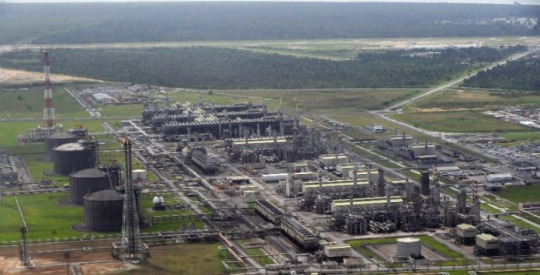
#world news#world politics#news#europe#european news#european union#eu politics#eu news#germany news#germany#olaf scholz#africa#energy prices#energy industry#energy production#energy efficiency#energy infrastructure#energy independence#renewableenergy#renewable power#renewable energy#renewable resources#renewable electricity#renewable integration#energy#hydrogen#hydrogen economy#hydrogen fuel companies#hydrogen fuel stations#climatechange
0 notes
Text
Car Wind Turbines
At present there is no car manufacturer who has integrated a wind turbine to a car to generate free electrical energy for direct recharging of a car battery.
Proposal 1: An attachable car roof wind turbine with folding blades that can be stored in an easily accessible storage compartment within the boot of a car for instant recharging of your vehicle. This will greatly reduce reliance upon city and town energy infrastructure.
Such a turbine car roof fitting will allow electric vehicle users to travel unlimited distances from country to country without the worry of where and when to recharge. It will lessen a growing burden that is presently building upon the demands of vehicle recharging economics.
Proposal 2: Two fitted tubes running parallel to the chasse positioned car battery. Each tube is filled with small wind turbines that generate energy whilst the vehicle is in motion. Each wind turbine of the car length cylinders directly send generated electricity to the vehicle battery for recharging.
The installation of wind turbines to cars has been quoted as having the capability of reducing electric vehicle energy costs by up to 70%.
0 notes
Text
/PRNewswire/ -- Energy Management Systems Market is projected to reach USD 75.6 billion in 2028 from USD 40.7 billion in 2023 at a CAGR of 13.2% according...
#energy#power#electricity#power generation#utilities#electric utilities#renewable energy#renewable#energy efficiency#energy management system#renewable energy market#energy management systems#energy markets#energy management#sustainable energy#energía#energia#energy industry#energy transition#energy infrastructure#energy supply#power management#transmission and distribution#power transmission#power distribution#utilities industry#utility
0 notes
Text
Industrial Lead-Acid Battery Market Analysis, Growth Factors and Dynamic Demand by 2032
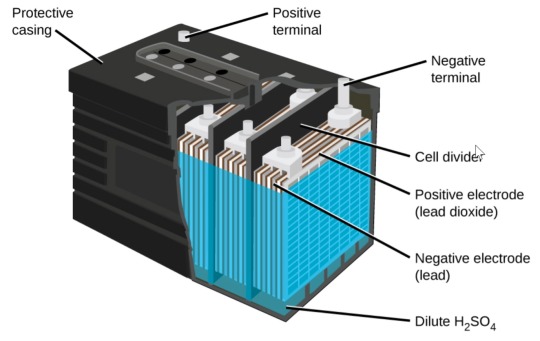
Industrial Lead-Acid Battery Market Overview:
The industrial lead-acid battery market involves the production and distribution of batteries specifically designed for industrial applications. Lead-acid batteries are rechargeable batteries that use lead plates immersed in an electrolyte solution to store and release electrical energy. They are widely used in various industries for applications such as backup power, emergency lighting, uninterruptible power supply (UPS), telecommunications, electric vehicles, and renewable energy storage.
The global Lead Acid Battery market exhibited a valuation of USD 30.6 billion in 2022, and it is projected to achieve a remarkable CAGR of 6.9% from 2023 to 2032, leading to a market size of USD 59.6 billion.
Key Points:
Types of Industrial Lead-Acid Batteries: The industrial lead-acid battery market offers different types of batteries, including valve-regulated lead-acid (VRLA) batteries and flooded lead-acid batteries. VRLA batteries, such as AGM (absorbent glass mat) and gel batteries, are maintenance-free and sealed, while flooded batteries require periodic maintenance.
Wide Range of Applications: Industrial lead-acid batteries find applications in diverse industries, including telecommunications, data centers, manufacturing, transportation, renewable energy, and utilities. They provide reliable power backup, energy storage, and support critical operations in these sectors.
Robust and Reliable Performance: Lead-acid batteries are known for their robustness and long service life, making them suitable for demanding industrial applications. They can deliver high currents, withstand harsh environmental conditions, and provide consistent performance over an extended period.
Demand and Opportunity:
Increasing Need for Power Backup: The growing reliance on uninterrupted power supply in industries such as telecommunications, data centers, and manufacturing drives the demand for industrial lead-acid batteries. These batteries serve as reliable backup power sources during grid outages or unstable power conditions.
Expansion of Renewable Energy: The expansion of renewable energy systems, such as solar and wind power, creates opportunities for industrial lead-acid batteries as energy storage solutions. These batteries store excess energy generated by renewable sources for later use, enhancing grid stability and enabling renewable energy integration.
Growth of Electric Vehicles: The increasing adoption of electric vehicles (EVs) and hybrid electric vehicles (HEVs) fuels the demand for industrial lead-acid batteries. These batteries are used in EVs for auxiliary power, such as lighting, HVAC systems, and power steering, and in HEVs for regenerative braking.
Future Forecast:
Advancements in Battery Technology: Ongoing research and development efforts focus on improving the performance and energy density of lead-acid batteries. Innovations in electrode materials, electrolytes, and battery management systems aim to enhance efficiency, cycle life, and overall performance.
Shift towards VRLA Batteries: The market is witnessing a shift towards valve-regulated lead-acid (VRLA) batteries, particularly AGM and gel batteries. These batteries offer maintenance-free operation, improved safety, and better resistance to vibration and shock, making them suitable for a wide range of industrial applications.
Integration of Smart Features: The integration of smart features, such as battery monitoring systems, remote monitoring, and diagnostics, enhances the efficiency and reliability of industrial lead-acid batteries. These features enable real-time monitoring, predictive maintenance, and optimized battery performance.
Focus on Sustainability: The market is placing increased emphasis on sustainability and environmental stewardship. Manufacturers are implementing recycling programs, adopting eco-friendly manufacturing processes, and developing lead-acid batteries with reduced environmental impact.
We recommend referring our Stringent datalytics firm, industry publications, and websites that specialize in providing market reports. These sources often offer comprehensive analysis, market trends, growth forecasts, competitive landscape, and other valuable insights into this market.
By visiting our website or contacting us directly, you can explore the availability of specific reports related to this market. These reports often require a purchase or subscription, but we provide comprehensive and in-depth information that can be valuable for businesses, investors, and individuals interested in this market.
“Remember to look for recent reports to ensure you have the most current and relevant information.”
Click Here, To Get Free Sample Report: https://stringentdatalytics.com/sample-request/industrial-lead-acid-battery-market/12895/
Market Segmentations:
Global Industrial Lead-Acid Battery Market: By Company
• Coslight
• East Penn Manufacturing
• EnerSys
• Exide Technologies
• GS Yuasa
• C&D Technologies
• Crown Battery
• Daejin Battery
• EverExceed
• Exide Industries
• HBL Power Systems
• HOPPECKE
• Microtex Energy
• MIDAC Batteries
• Navitas System
• Rolls Battery
• Storage Battery Systems
• Su-Kam Power Systems
• Trojan Battery
Global Industrial Lead-Acid Battery Market: By Type
• FLA Batteries
• VRLA Batteries
Global Industrial Lead-Acid Battery Market: By Application
• Automotive
• Telecom
• Transport Vehicles
• Electric Bikes
• UPS
Global Industrial Lead-Acid Battery Market: Regional Analysis
The regional analysis of the global Industrial Lead-Acid Battery market provides insights into the market's performance across different regions of the world. The analysis is based on recent and future trends and includes market forecast for the prediction period. The countries covered in the regional analysis of the Industrial Lead-Acid Battery market report are as follows:
North America: The North America region includes the U.S., Canada, and Mexico. The U.S. is the largest market for Industrial Lead-Acid Battery in this region, followed by Canada and Mexico. The market growth in this region is primarily driven by the presence of key market players and the increasing demand for the product.
Europe: The Europe region includes Germany, France, U.K., Russia, Italy, Spain, Turkey, Netherlands, Switzerland, Belgium, and Rest of Europe. Germany is the largest market for Industrial Lead-Acid Battery in this region, followed by the U.K. and France. The market growth in this region is driven by the increasing demand for the product in the automotive and aerospace sectors.
Asia-Pacific: The Asia-Pacific region includes Singapore, Malaysia, Australia, Thailand, Indonesia, Philippines, China, Japan, India, South Korea, and Rest of Asia-Pacific. China is the largest market for Industrial Lead-Acid Battery in this region, followed by Japan and India. The market growth in this region is driven by the increasing adoption of the product in various end-use industries, such as automotive, aerospace, and construction.
Middle East and Africa: The Middle East and Africa region includes Saudi Arabia, U.A.E, South Africa, Egypt, Israel, and Rest of Middle East and Africa. The market growth in this region is driven by the increasing demand for the product in the aerospace and defense sectors.
South America: The South America region includes Argentina, Brazil, and Rest of South America. Brazil is the largest market for Industrial Lead-Acid Battery in this region, followed by Argentina. The market growth in this region is primarily driven by the increasing demand for the product in the automotive sector.
Visit Report Page for More Details: https://stringentdatalytics.com/reports/industrial-lead-acid-battery-market/12895/
Reasons to Purchase Industrial Lead-Acid Battery Market Report:
Market Analysis: The report provides a comprehensive analysis of the industrial lead-acid battery market, including current trends, market size, growth potential, and competitive landscape. It offers valuable insights into market dynamics, enabling businesses to understand the market conditions and make informed decisions.
Industry Trends: The report highlights the latest trends and developments in the industrial lead-acid battery market, including technological advancements, product innovations, and emerging markets. By staying updated on industry trends, businesses can identify opportunities and stay ahead of their competitors.
Market Forecasts: The report provides market forecasts for the industrial lead-acid battery market, including revenue projections, growth rates, and market share. These forecasts help businesses in strategic planning, resource allocation, and investment decisions.
Competitive Analysis: The report offers a detailed analysis of the competitive landscape of the industrial lead-acid battery market, including key players, their market presence, and strategies. This information helps businesses understand their competitors and devise effective strategies to gain a competitive advantage.
Customer Insights: The report provides insights into customer preferences, buying patterns, and demands in the industrial lead-acid battery market. Understanding customer needs and preferences helps businesses tailor their products and services to meet market demands effectively.
Investment Opportunities: The report identifies potential investment opportunities in the industrial lead-acid battery market, such as emerging markets, new product developments, and strategic partnerships. Businesses can use this information to explore new business ventures and expand their market presence.
Regulatory Landscape: The report covers the regulatory framework and policies governing the industrial lead-acid battery market. Understanding the regulatory landscape helps businesses ensure compliance and avoid legal issues.
About US:
Stringent Datalytics offers both custom and syndicated market research reports. Custom market research reports are tailored to a specific client's needs and requirements. These reports provide unique insights into a particular industry or market segment and can help businesses make informed decisions about their strategies and operations.
Syndicated market research reports, on the other hand, are pre-existing reports that are available for purchase by multiple clients. These reports are often produced on a regular basis, such as annually or quarterly, and cover a broad range of industries and market segments. Syndicated reports provide clients with insights into industry trends, market sizes, and competitive landscapes. By offering both custom and syndicated reports, Stringent Datalytics can provide clients with a range of market research solutions that can be customized to their specific needs
Contact US:
Stringent Datalytics
Contact No - +1 346 666 6655
Email Id - [email protected]
Web - https://stringentdatalytics.com/
#Industrial Lead-Acid Battery#Energy Storage#Battery Technology#Power Backup#Renewable Energy#Energy Storage Systems#Energy Infrastructure#Lead-Acid Batteries#Industrial Batteries#Backup Power#Energy Efficiency#Sustainable Energy#Energy Sector#Battery Systems#Electrochemical Storage#Deep Cycle Batteries#Battery Manufacturing#Grid Energy Storage#Power Generation#Industrial Applications#Forklift Batteries#Solar Energy Storage#Telecom Backup Power#UPS Systems#Electric Vehicles#Off-Grid Systems.
1 note
·
View note
Text
In Nord Stream bombings probe, German investigators see Ukraine link, reports say
BERLIN — German prosecutors have found “traces” of evidence indicating that Ukrainians may have been involved in the explosions that blew up the Nord Stream gas pipelines in September 2022, according to German media reports Tuesday.
Investigators identified a boat that was potentially used for transporting a crew of six people, diving equipment and explosives into the Baltic Sea in early…
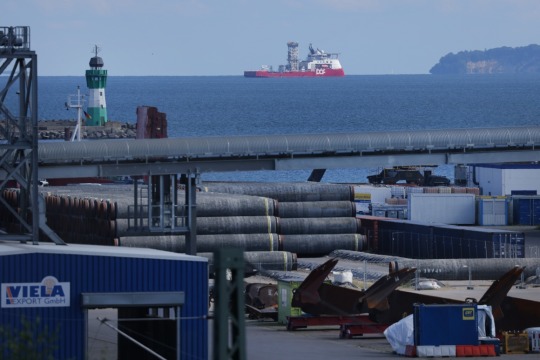
View On WordPress
#Denmark#Diplomacy#Energy infrastructure#Energy supply#EU-Russia relations#Foreign policy#German politics#Germany#Pipelines#poland#russia#Sweden#ukraine#Volodymyr Zelenskyy#War in Ukraine
0 notes
Text
Hitachi’s Innovative Power Transmission Technology Ensures Clean Energy for NY Homes

Making long-distance energy transfer a reality
Decarbonization goals require the government to work closely with the private sector to develop effective solutions for clean energy transmission. These public-private partnerships, such as the ambitious project in New York leveraging Hitachi’s high-voltage direct current (HVDC) technology, is essential if objectives at the state and local levels are to be achieved.
However, though emerging tools and technologies aim to reduce carbon emissions, the problem of electricity transmission has been a major obstacle. The project in New York is setting the bar for public-private partnerships in the energy sector with Hitachi’s unique technology and is making long-distance energy transfer a reality.
Renewable energy transmission to power New York
The state of New York’s Climate Leadership and Community Protection Act has set a target to be powered by 70% renewable energy by 2030^ . Historically, the state has been reliant on traditional and dispatchable energy sources like gas and coal. But most renewable energy sources must be held in reserve until needed. Accessing renewable energy on demand requires a means of storing power for later use.
Initially, the challenge was to find a suitable renewable power reservoir that was well-positioned for the transfer of renewable energy to and from the state. As Quebec relies mostly on hydropower generation, its infrastructure and capacity provided renewable energy storage capabilities to its neighbor. Next, an environmentally responsible means of bringing clean hydropower from Quebec to New York City was facilitated by Hitachi’s HVDC technology.
As the technology powers the Champlain Hudson Power Express (CHPE) link between Quebec and New York City, it deploys long distances underground and underwater, to bypass legacy transmission bottlenecks and meet the growing demand for clean power. Using Hitachi’s HVDC Light technology, CHPE will transfer up to 1,250 megawatts of electricity, enough to power 1 million New York homes.
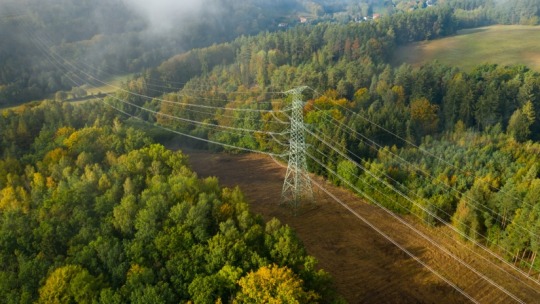
Hitachi’s HVDC for clean energy transmission
As a New York City mandate requiring the installation of electric appliances comes into force, demand for electricity in the city will grow. With HVDC Light’s ability to promote resource diversity to overall resource reliability, the CHPE system will be better equipped to meet the increase in electricity consumption.
HVDC Light further supports the state’s climate goals by maintaining a low environmental impact, and its converter stations likewise have a small carbon footprint. The CHPE project is expected to create 1,400 jobs from the construction phase, bringing $50 billion in economic benefits to New York state. The impact of the project is projected to be equal to removing 44% of passenger vehicles from the city. ^^
Hitachi’s work on the CHPE system reflects the company’s commitment to deploying technology to achieve social good by making it feasible to achieve critical sustainability goals.
Discover how Hitachi is driving social innovation and digital transformation in Energy:
Sources
^ https://www.governor.ny.gov/news/governor-hochul-announces-new-framework-achieve-nation-leading-six-gigawatts-energy-storage#:~:text=Today's%20announcement%20supports%20the%20Climate,zero%2Demission%20electricity%20by%202040.
^^ PA Knowledge Limited, “Champlain Hudson Power Express,” May 10, 2021, https://chpexpress.com/wp-content/uploads/2021/05/PA-Consulting-Tier-4-REC-Bid-Report_05-10-2021.pdf
#energy storage#power transmission#energy infrastructure#energy storage solutions#transmission solutions#energy transmission#transmission technology#electricity Transmission#electric power transmission#power transmission system#transmission capacity#renewable energy transmission#transmission infrastructure#power transmission solutions#HVDC technology#energy transmission system#clean energy transmission#green power transmission#energy transmission technology#innovative transmission technology#high-voltage direct current#long distance energy transfer#long distance power transmission#hvdc light transmission technology#sustainability
0 notes
Text
#Energy Infrastructure for EV Charging Stations Market#EV Charging Stations#Energy Infrastructure#Energy Infrastructure for EV Charging Stations#Charging Pile#Charging Station
0 notes
Text

#photography#dimitri djuric#art#2020s#energy#power#culture#electric#infrastructure#photos#aesthetic#night#electrical grid#engineering#technology#light#science#electricity#power grid#communication#⚡ ⚡ ⚡
2K notes
·
View notes
Text
youtube
The US passed the world's biggest climate bill EVER (so far!) in 2022 and most people have no idea!!!
This video digs into all of the different awesome things the Inflation Reduction Act does - and why it puts the US back on track to potentially meet our Paris Agreement commitments.
Yall, the Inflation Reduction Act changed the whole game when it comes to climate change in the US. In fact, it's in large part why climate experts (and Hank Green, in this video) say that as of 2022,
We have more reason to have hope that we can save ourselves than we have EVER had, since we started to realize the true extent of climate change
Note: If you're wondering why the biggest climate bill in US history was passed under the name "Inflation Reduction Act," the answer seems to mostly be that it's easier to actually get shit done on climate if the name of the bill doesn't tell everyone that's what you're doing. (Also like. It was designed to reduce inflation too. Just, yknow. Not only.)
Transcript here! (There is a full transcript, it just might not look like it because it's not super clear that the text scrolls at first. Ask me how I know lol.)
-via Vlogbrothers, August 12, 2022
#climate change#sustainability#us politics#united states#green energy#renewable energy#solar power#wind power#green jobs#infrastructure#paris agreement#biden#democrats#us congress#voting matters#good news#hope#vlogbrothers#hank green#hope posting#video#transcript available#Youtube
642 notes
·
View notes
Text
Deb Chachra's "How Infrastructure Works": Mutual aid, the built environment, the climate, and a future of comfort and abundance
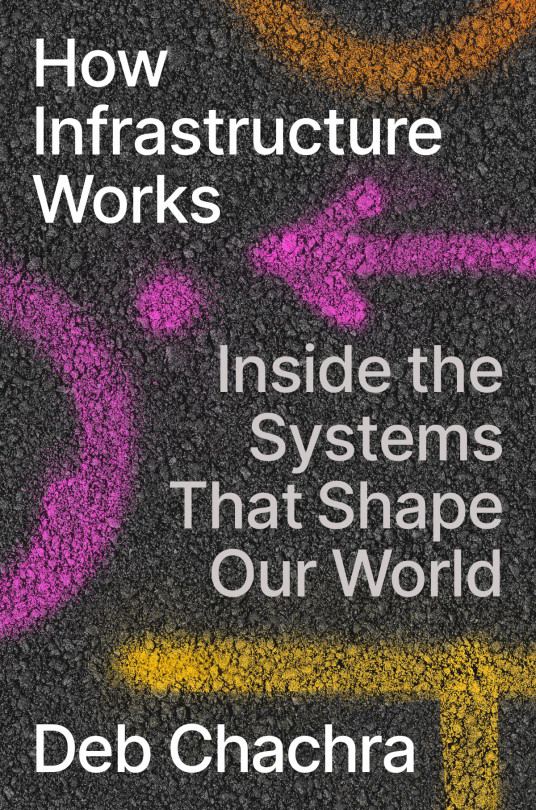
This Thursday (Oct 19), I'm in Charleston, WV to give the 41st annual McCreight Lecture in the Humanities. And on Friday (Oct 20), I'm at Charleston's Taylor Books from 12h-14h.

Engineering professor and materials scientist Deb Chachra's new book How Infrastructure Works is a hopeful, lyrical – even beautiful – hymn to the systems of mutual aid we embed in our material world, from sewers to roads to the power grid. It's a book that will make you see the world in a different way – forever:
https://www.penguinrandomhouse.com/books/612711/how-infrastructure-works-by-deb-chachra/
Chachra structures the book as a kind of travelogue, in which she visits power plants, sewers, water treatment plants and other "charismatic megaprojects," connecting these to science, history, and her own memoir. In so doing, she doesn't merely surface the normally invisible stuff that sustains us all, but also surfaces its normally invisible meaning.
Infrastructure isn't merely a way to deliver life's necessities – mobility, energy, sanitation, water, and so on – it's a shared way of delivering those necessities. It's not just that economies of scale and network effects don't merely make it more efficient and cheaper to provide these necessities to whole populations. It's also that the lack of these network and scale effects make it unimaginable that these necessities could be provided to all of us without being part of a collective, public project.
Think of the automobile versus public transit: if you want to live in a big, built up city, you need public transit. Once a city gets big enough, putting everyone who needs to go everywhere in a car becomes a Red Queen's Race. With that many cars on the road, you need more roads. More roads push everything farther apart. Once everything is farther apart, you need more cars.
Geometry hates cars. You can't bargain with geometry. You can't tunnel your way out of this. You can't solve it with VTOL sky-taxis. You can't fix it with self-driving cars whose car-to-car comms let them shave down their following distances. You need buses, subways and trams. You need transit. There's a reason that every plan to "disrupt" transportation ends up reinventing the bus:
https://stanforddaily.com/2018/04/09/when-silicon-valley-accidentally-reinvents-the-city-bus/
Even the cities we think of as motorists' paradises – such as LA – have vast, extensive transit systems. They suck – because they are designed for poor people – but without them, the city would go from traffic-blighted to traffic-destroyed.
The dream of declaring independence from society, of going "off-grid," of rejecting any system of mutual obligation and reliance isn't merely an infantile fantasy – it also doesn't scale, which is ironic, given how scale-obsessed its foremost proponents are in their other passions. Replicating sanitation, water, rubbish disposal, etc to create individual systems is wildly inefficient. Creating per-person communications systems makes no sense – by definition, communications involves at least two people.
So infrastructure, Chachra reminds us, is a form of mutual aid. It's a gift we give to ourselves, to each other, and to the people who come after us. Any rugged individualism is but a thin raft, floating on an ocean of mutual obligation, mutual aid, care and maintenance.
Infrastructure is vital and difficult. Its amortization schedule is so long that in most cases, it won't pay for itself until long after the politicians who shepherded it into being are out of office (or dead). Its duty cycle is so long that it can be easy to forget it even exists – especially since the only time most of us notice infrastructure is when it stops working.
This makes infrastructure precarious even at the best of times – hard to commit to, easy to neglect. But throw in the climate emergency and it all gets pretty gnarly. Whatever operating parameters we've designed into our infra, whatever maintenance regimes we've committed to for it, it's totally inadequate. We're living through a period where abnormal is normal, where hundred year storms come every six months, where the heat and cold and wet and dry are all off the charts.
It's not just that the climate emergency is straining our existing infrastructure – Chachra makes the obvious and important point that any answer to the climate emergency means building a lot of new infrastructure. We're going to need new systems for power, transportation, telecoms, water delivery, sanitation, health delivery, and emergency response. Lots of emergency response.
Chachra points out here that the history of big, transformative infra projects is…complicated. Yes, Bazalgette's London sewers were a breathtaking achievement (though they could have done a better job separating sewage from storm runoff), but the money to build them, and all the other megaprojects of Victorian England, came from looting India. Chachra's family is from India, though she was raised in my hometown of Toronto, and spent a lot of her childhood traveling to see family in Bhopal, and she has a keen appreciation of the way that those old timey Victorian engineers externalized their costs on brown people half a world away.
But if we can figure out how to deliver climate-ready infra, the possibilities are wild – and beautiful. Take energy: we've all heard that Americans use far more energy than most of their foreign cousins (Canadians and Norwegians are even more energy-hungry, thanks to their heating bills).
The idea of providing every person on Earth with the energy abundance of an average Canadian is a horrifying prospect – provided that your energy generation is coupled to your carbon emissions. But there are lots of renewable sources of energy. For every single person on Earth to enjoy the same energy diet as a Canadian, we would have to capture a whopping four tenths of a percent of the solar radiation that reaches the Earth. Four tenths of a percent!
Of course, making solar – and wind, tidal, and geothermal – work will require a lot of stuff. We'll need panels and windmills and turbines to catch the energy, batteries to store it, and wires to transmit it. The material bill for all of this is astounding, and if all that material is to come out of the ground, it'll mean despoiling the environments and destroying the lives of the people who live near those extraction sites. Those are, of course and inevitably, poor and/or brown people.
But all those materials? They're also infra problems. We've spent millennia treating energy as scarce, despite the fact that fresh supplies of it arrive on Earth with every sunrise and every moonrise. Moreover, we've spent that same period treating materials as infinite despite the fact that we've got precisely one Earth's worth of stuff, and fresh supplies arrive sporadically, unpredictably, and in tiny quantities that usually burn up before they reach the ground.
Chachra proposes that we could – we must – treat material as scarce, and that one way to do this is to recognize that energy is not. We can trade energy for material, opting for more energy intensive manufacturing processes that make materials easier to recover when the good reaches its end of life. We can also opt for energy intensive material recovery processes. If we put our focus on designing objects that decompose gracefully back into the material stream, we can build the energy infrastructure to make energy truly abundant and truly clean.
This is a bold engineering vision, one that fuses Chachra's material science background, her work as an engineering educator, her activism as an anti-colonialist and feminist. The way she lays it out is just…breathtaking. Here, read an essay of hers that prefigures this book:
https://tinyletter.com/metafoundry/letters/metafoundry-75-resilience-abundance-decentralization
How Infrastructure Works is a worthy addition to the popular engineering books that have grappled with the climate emergency. The granddaddy of these is the late David MacKay's open access, brilliant, essential, Sustainable Energy Without the Hot Air, a book that will forever change the way you think about energy:
https://memex.craphound.com/2009/04/08/sustainable-energy-without-the-hot-air-the-freakonomics-of-conservation-climate-and-energy/
The whole "Without the Hot Air" series is totally radical, brilliant, and beautiful. Start with the Sustainable Materials companion volume to understand why everything can be explained by studying, thinking about and changing the way we use concrete and aluminum:
https://memex.craphound.com/2011/11/17/sustainable-materials-indispensable-impartial-popular-engineering-book-on-the-future-of-our-built-and-made-world/
And then get much closer to home – your kitchen, to be precise – with the Food and Climate Change volume:
https://pluralistic.net/2021/01/06/methane-diet/#3kg-per-day
Reading Chachra's book, I kept thinking about Saul Griffith's amazing Electrify, a shovel-ready book about how we can effect the transition to a fully electrified America:
https://pluralistic.net/2021/12/09/practical-visionary/#popular-engineering
Chachra's How Infrastructure Works makes a great companion volume to Electrify, a kind of inspirational march to play accompaniment on Griffith's nuts-and-bolts journey. It's a lyrical, visionary book, charting a bold course through the climate emergency, to a world of care, maintenance, comfort and abundance.

If you'd like an essay-formatted version of this post to read or share, here's a link to it on pluralistic.net, my surveillance-free, ad-free, tracker-free blog:
https://pluralistic.net/2023/10/17/care-work/#charismatic-megaprojects


My next novel is The Lost Cause, a hopeful novel of the climate emergency. Amazon won't sell the audiobook, so I made my own and I'm pre-selling it on Kickstarter!
#pluralistic#books#reviews#deb chachra#debcha#engineering#infrastructure#free energy#material science#abundance#scarcity#mutual aid#maintenance#99 percent invisible#colonialism#gift guide
259 notes
·
View notes
Text
XOM Earnings: ExxonMobil Q2 2023 profit falls on lower revenues
Energy giant ExxonMobil Corporation (NYSE: XOM) on Friday announced financial results for the second quarter of 2023, reporting a sharp fall in net profit and revenues.
Total revenues and other income declined 28% to $82.9 billion in the June quarter from $115.7 billion in the same period of 2022. The results were adversely impacted by lower natural gas realizations and industry refining…
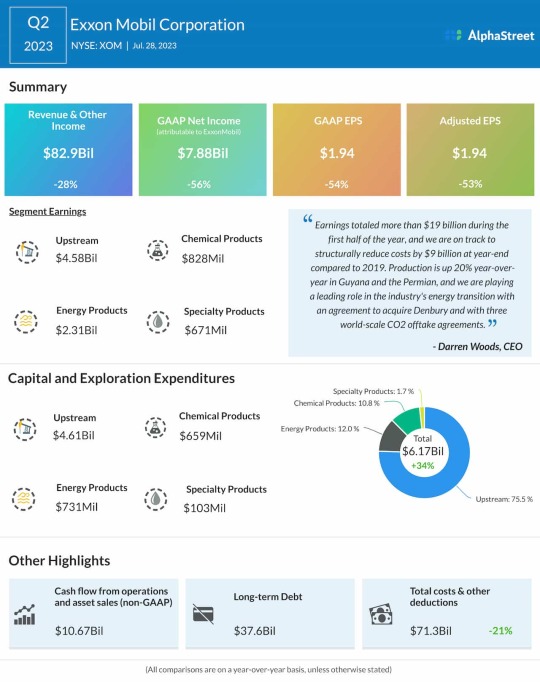
View On WordPress
0 notes